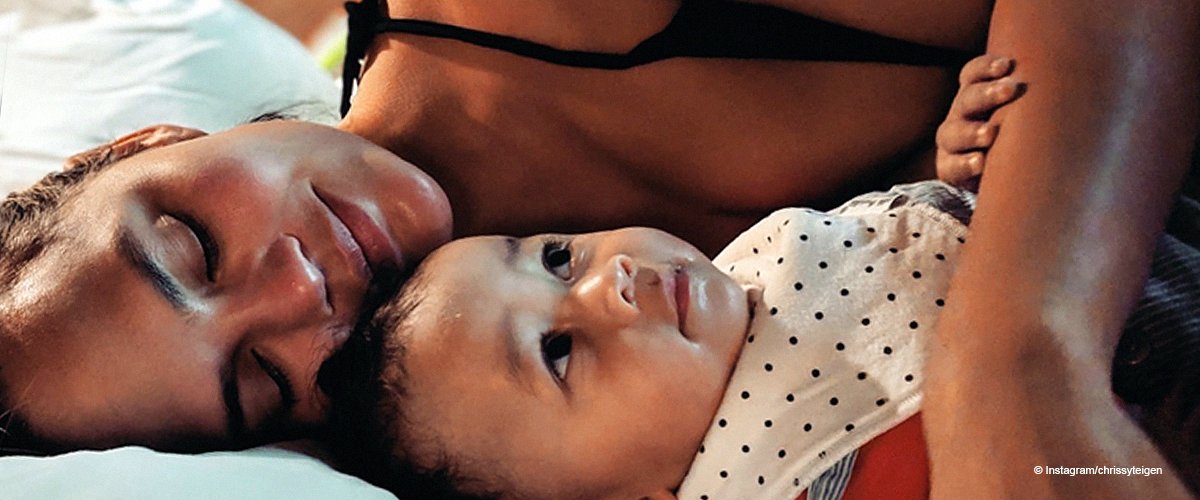
Chrissy Teigen Reveals Why Her Son Has Stopped Wearing a Special Helmet He Used since December
Chrissy Teigen had cause for celebration and took to social media to share the happy news that baby Miles is now officially helmet-free.
Mom and son are both delighted with the latest developments as there will be “no more helmet” for Miles, who turned nine months old on February 23.
On December 3, 2018, Chrissy posted an update on Twitter with the news that little Miles would be fitted with a customized helmet on that day and urged followers not to “feel bad” for Miles, possibly also a head’s up to trolls and negative nancy’s:
It didn’t deter backlash she received at all, the 33-year-old got a fair amount of criticism from followers and reached the point where she posted an update on it to stop the negative comments:
Miles adjusted well to helmet life being “a supremely mellow dude” like his father, John Legend. Chrissy kept him looking adorable in a well-decorated helmet that needed adjustments made every week.
Now Miles’ “adorable slightly misshapen head” is back in form and his helmet days are over, for now, or until he plunges into the perils of learning to ride a bike. Wednesday morning was a joyous moment for them all as Chrissy wished her baby boy a “happy helmet free day.”
The supermodel shared a video of her and baby Miles cuddling up while they both seemed in high spirits as there is “no more helmet!”
However, Miles’ helmet seemed to shine a light on the fairly unfamiliar practice that started in the early 1990s. Not knowing what the purpose of the helmet was, many fans asked for more information:
The skull of a newborn consists of soft plates with spaces between them which give space for the rapidly growing baby’s brain to expand, the plates to grow and fuse together in a gradual process that takes around two years.
In the first few months of life, the skull is at it's softest and uneven or flats spots can occur especially when a baby spends a lot of time in the same position. The helmet takes the pressure off the soft skull of the baby and allows it to expand and grow naturally.
Considered to be a cosmetic issue, the correction works best for babies between the ages of four months to a year and generally worn for three months. Sometimes babies born prematurely also get fitted with a helmet, as another follower added:
If you would rather avoid your baby having to spend months in bedazzled headgear, you can alternate the direction of your baby’s head when placed in the crib while making sure the baby goes to sleep on his/her back.
Having your baby in an upright position regularly will also help relieve pressure from the brain. Tummy time is good under direct controlled supervision; it helps with the strengthening of the neck muscles and also takes the weight of the brain.
Perhaps little Miles is a mini version of his dad, as John posted his 9-month-old doing something he does practically every day.
